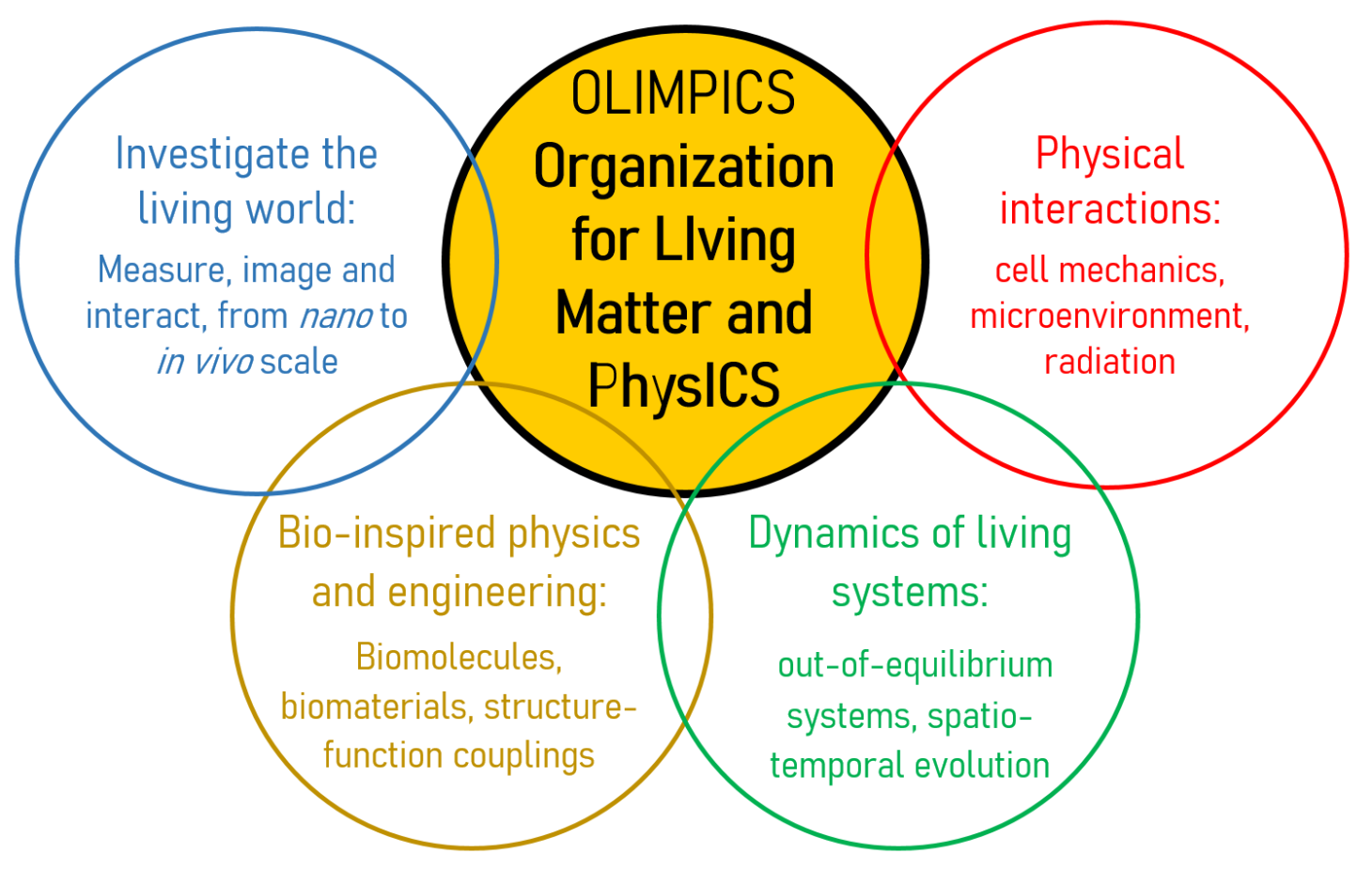- Share
- Share on Facebook
- Share on X
- Share on LinkedIn
OLIMPICS is a research federation which brings together scientists from the Grenoble site working at the interfaces between physics and life. The challenge of OLIMPICS is to create a multidisciplinary synergy to accelerate our fundamental (understanding living things) and applied research (innovating by and for living things). “Understanding to innovate” is therefore the transdisciplinary research guideline of the teams constituting OLIMPICS whose objectives are the following:
• promote an interdisciplinary ecosystem to create new scientific and technological synergies by promoting collaborations and exchanges. Links with medical research will be strengthened to feed fundamental research into relevant questions in medicine.
• Promote interdisciplinary training in the different interfaces between physics and life
• Create an active community of young non-permanent researchers involved in the federation's actions to initiate their network, enrich their knowledge and develop their curiosity.
• Increase the visibility and attractiveness of the site for students, young scientists and the international community as a whole
The OLIMPICS scientific project is divided into four scientific axes closely linked by techniques or fundamental questions. A first axis is based on the strong identity of the Grenoble site in technological innovation and concerns instrumental developments to push current limits. A second axis is based on a bio-inspired approach and a better understanding of biological structure-function links for the development of biomaterials, biosensors and new systems in the medical field. A third axis focuses on the dynamic properties of living systems at all scales, from the molecule to the population scale, theoretically and experimentally. Finally, a fourth axis explores the physical interactions of living things, whether between cells, with their micro-environment or with radiation.

The first axis, investigate the living world, concerns instrumental developments, based on the very strong identity of the Grenoble site in this field, with specific skills at the molecular scale thanks to the presence of large instruments (ILL and ESRF) as well as micro and nano-fabrication and microscopy platforms. More recent skills, particularly in optics and bioelectronics, have enabled us to develop strategies for functional detection and imaging at scales ranging from the molecular to the small animal. The aim is to go beyond current limits of instrumentation for the imaging and characterization of living matter at all scales, the manipulation at micro and nanoscopic scales and the development of biosensors and biochips. Concerning applications, the teams benefit from the strong tradition of technology transfer and the local network of start-ups as well as the proximity with the University Hospital : CHU Genoble Alpes.
The second axis, bio-inspired physics and engineering, concerns biomaterials and biomolecules, using bio-inspired or more fundamental engineering approaches to understand structure-function couplings. By understanding the links between structure and function in living organisms, the teams in this area propose bio-inspired systems for biosensors or new systems in the medical field. This area also involves the development of biomimetic materials with innovative physico-chemical properties for the fundamental study of cells in model environments, reconstituted in 2D or 3D.
The third axis, dynamics of living systems, explores the biological world with a basic science perspective, focusing on the dynamic properties of living systems at all scales (populations, animals, protein and gene regulation). Using experimental and theoretical approaches the axis is articulated around three topics: (i) exploring the spatio-dynamic nature of active matter, including collective phenomena and ecological dynamics; (ii) examining the adaptive capacity of living systems to process and manipulate physico-chemical information for a proper functioning, particularly in neural networks and cellular systems and (iii) investigating the self-assembly properties of living matter and the evolutionary logic of "molecular tinkering," crucial for understanding and controlling living organisms.
The fourth axis, physical interactions, explores the physical interactions of living matter: physical interactions between cells, with their micro-environment and with external cues as ways to probe and interact with healthy and pathological living systems. This includes cell mechanics in the broadest sense, i.e. both the complex mechanical properties of living matter and the ability of cells to process a mechanical signal in order to adapt their biological response. This axis also includes the interactions of living organisms with radiation with an applicative goal to propose innovative radiotherapies.
In this section
- Share
- Share on Facebook
- Share on X
- Share on LinkedIn